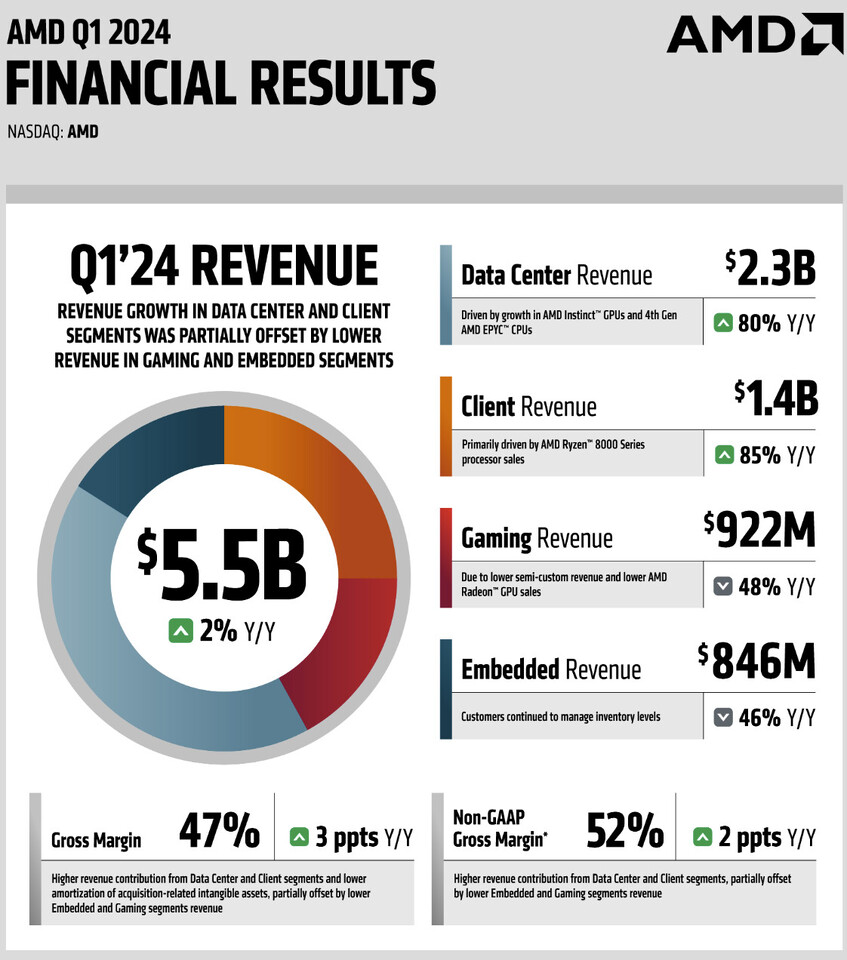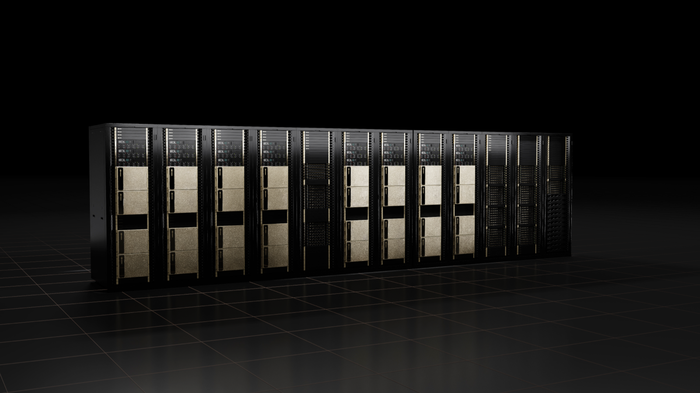Lisa Su: Data Center GPU Sales To Hit $4B, Teases Future Chips
With AMD looking to challenge Nvidia’s dominance in the AI computing space, Su said expanded customer engagements with the company’s Instinct MI300 accelerator chips prompted it to upgrade its 2024 data center GPU revenue forecast to $4 billion.
This represents a $500 million bump from the data center GPU guidance the company offered in January. In the month prior, AMD marked the official launch of the MI300 chips as a challenge to Nvidia’s powerful and popular H100 GPU.
Su said more than 100 enterprise and AI customers are “actively developing or deploying” the MI300X, the GPU-only version of the processor. (The other version is the MI300A, which combines GPU cores and CPU cores onto a single package.)
What’s helping with demand are the multiple MI300X systems entering volume production this quarter with OEMs such as Dell Technologies, Hewlett Packard Enterprise, Lenovo, Supermicro and others, according to Su. Cloud service providers Microsoft and Oracle have also expanded their MI300X production environments, as did Facebook parent company Meta.
“What we see now is just greater visibility to both current customers as well as new customers committing to MI300,” she said.
This increased interest helped the MI300 become AMD’s “fastest-ramping product” in its history, generating more than $1 billion in “total sales in less than two quarters.”
Su suggested that AMD could sell even more MI300 products if it wasn’t for supply constraints that were holding the company back, which she considered an industry-wide issue. The company expects MI300 supply to “improve every quarter this year.”
“We are tight on supply, so there’s no questions in the near term that if we had more supply, we have demand for that product, and we're going to continue to work on those elements as we go through the year,” Su said, adding that she’s “very pleased with how the ramp is going.”
https://www.crn.com/news/components...g-product-teases-new-ai-chips-later-this-year
With AMD looking to challenge Nvidia’s dominance in the AI computing space, Su said expanded customer engagements with the company’s Instinct MI300 accelerator chips prompted it to upgrade its 2024 data center GPU revenue forecast to $4 billion.
This represents a $500 million bump from the data center GPU guidance the company offered in January. In the month prior, AMD marked the official launch of the MI300 chips as a challenge to Nvidia’s powerful and popular H100 GPU.
Su said more than 100 enterprise and AI customers are “actively developing or deploying” the MI300X, the GPU-only version of the processor. (The other version is the MI300A, which combines GPU cores and CPU cores onto a single package.)
What’s helping with demand are the multiple MI300X systems entering volume production this quarter with OEMs such as Dell Technologies, Hewlett Packard Enterprise, Lenovo, Supermicro and others, according to Su. Cloud service providers Microsoft and Oracle have also expanded their MI300X production environments, as did Facebook parent company Meta.
“What we see now is just greater visibility to both current customers as well as new customers committing to MI300,” she said.
This increased interest helped the MI300 become AMD’s “fastest-ramping product” in its history, generating more than $1 billion in “total sales in less than two quarters.”
Su suggested that AMD could sell even more MI300 products if it wasn’t for supply constraints that were holding the company back, which she considered an industry-wide issue. The company expects MI300 supply to “improve every quarter this year.”
“We are tight on supply, so there’s no questions in the near term that if we had more supply, we have demand for that product, and we're going to continue to work on those elements as we go through the year,” Su said, adding that she’s “very pleased with how the ramp is going.”
https://www.crn.com/news/components...g-product-teases-new-ai-chips-later-this-year
![[H]ard|Forum](/styles/hardforum/xenforo/logo_dark.png)


